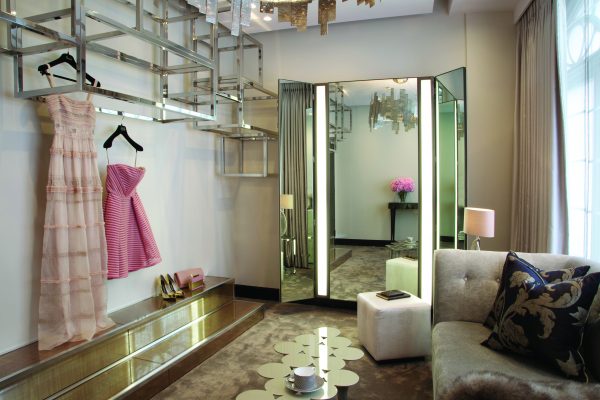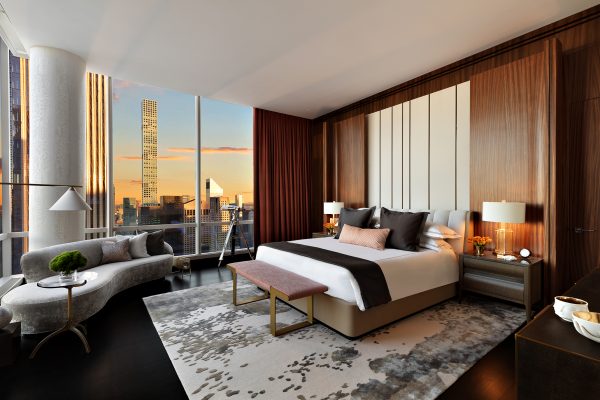The Code of Conduct is a mandatory regulation adopted by each designer and firm we regulate.
In 2020, to incorporate unique changes arising from Brexit, SBID launched an independent Code of Conduct for members to reflect the independent position of the UK and international business locations where designers procure their work. For the purpose of this Code, the Interior Designer is he or she who is a member of SBID, and/or his firm, associates or employees.
All collaborating partner firms and their employees must also adhere to the Code of Ethics.
For the sake of readability, the feminine form is omitted in the following articles.
1. General Responsibility
1.1 Compliance to general ethics: The Interior Designer shall act in a way that contributes to the honour and dignity of the profession. He shall abide by the Codes of Ethics and Conduct and laws in force in the countries and jurisdictions where he provides professional services.
1.2 Competence: The Interior Designer shall strive to continually improve his professional knowledge and skill. He shall accept appointments only that are within his competence of performance.
1.3 Avoiding conflicts of interest: The Interior Designer shall only assume or accept a position in which his personal interests will not bring him in conflict with his professional duty.
2. Responsibility to society
2.1 The Interior Designer accepts a professional obligation to further the social, cultural and environmental standards of the community. He takes into account the consequences of his professional activity to the health, safety and wellbeing of all those who may reasonably be expected to use or enjoy the product of his work.
3. Responsibility to the client
3.1 Commitment and loyalty: The interior designer shall act in his client’s interests within the limits of his professional duties.
3.2 Scope of work, agreement and contract: The Interior Designer shall undertake professional work only if the scope of work, conditions, responsibilities, liabilities and limitations thereof, remuneration (fee) or method of calculation thereof and the duration of the contract are clearly agreed in writing.
3.3 Remuneration: The Interior Designer shall when undertaking a mission see that the compensation for the work is relevant to the scope and importance of the performed work, and he will only accept additional financial profits or any other profits from third parties that are agreed upon in advance by the client.
3.4 Transparency: The Interior Designer shall ensure that his practice has appropriate and effective internal procedures and administration as to enable him to function efficiently and he will keep the Client informed of the progress of work undertaken on the client’s behalf and of any issues that may affect its quality or cost. Administration with regard to the project will be available for perusal by the client upon request.
3.5 Confidentiality: The Interior Designer shall respect at all times the confidence of those for whom he works and not without prior consent disclose those confidential matters.
3.6 Dispute Resolution: The Interior Designer shall operate a Complaints Handling Procedure and provide the client with a copy as soon as a dispute is raised.
3.7 Complaints: The Interior Designer shall cooperate adequately with SBID in their investigations of a complaint.
4. Responsibility to the profession
4.1 Fellowship: The Interior Designer shall promote an open and professional debate on all aspects of the profession. He is not to criticise unfairly or attempt to discredit a colleague or his work in public.
4.2 Loyalty and competition: The Interior Designer investigates, before accepting a commission, if the same commission has not been granted to a colleague. If such is the case, the successor enters in consultation with the colleague. The Interior Designer, who is commissioned to alter an existing building or interior, enables fraternal consultation with the original designer, before starting his work. The original designer will not oppose the commission as such.
4.3 Collaboration and succession: The Interior Designer shall provide his associates and employees with a suitable working environment, compensate them fairly, and facilitate their professional development. He will see to it that they will keep up with these rules of Conduct.
4.4 Originality: The Interior Designer acknowledges the part colleagues or employees may have had in the design. He shall not accept instructions from his client which knowingly involve plagiarism, nor shall he consciously act in any manner involving plagiarism.
5. Publicity
5.1 Fairness: The Interior Designer is free to communicate or promote his work and his expertise and experience. Any advertising or publicity material must contain only truthful factual statements. It shall be fair to clients and other designers, and in accordance with the dignity of the profession.
5.2 Originality: The Interior Designer shall only promote professional works or activities as designed by him and/or his collaborators. He shall not tolerate that his name is connected with the realisation of a design that has been changed in such a way that it is no longer essentially the original work of the Interior Architect.
5.3 Competition: A member may only take part in or serve on the jury of competitions when these are held in compliance with national and international rules as approved by our professional organisations.
6. Compliance and Sanctions
6.1 All matters concerning non-observance of this Code of Conduct and Professional Ethics shall be considered by the national organisation’s Board and/or Committee of Ethics, who may issue a caution or a disciplinary comment or may bar the individual from membership. A complaint against an Interior Designer can be brought forward by a colleague, a client of the defendant, or by somebody who has another professional relationship with the defendant.
6.2 The Interior Designer shall fully co-operate with SBID in the process of any investigation referring to professional duty, conduct, misconduct or negligence.
6.3 Members shall co-operate fully with SBID staff and any person appointed by the Regulatory Board.
7. Use of SBID Credentials
7.1 A Member that is reasonably aware that it may fail to meet any of the qualifying conditions as a SBID Registered Member, Practice or Partner Member must notify the SBID Secretariat promptly and remove all promotion and reference of SBID immediately.
7.2 In the event that membership is cancelled, a former member must cease promoting SBID Membership and remove any SBID branded material relating to membership including the Certificate of membership.
7.3 Members who do not pay their subscriptions in full each year will be removed from the SBID register and will lose their right to use the SBID letters after their name.
7.4 Members who do not comply with Continuing Professional Development (CPD) requirements will be removed from the SBID register and will lose their right to use the SBID letters after their name.
7.5 An individual member may also be removed on disciplinary grounds and therefore cease using SBID branded material relating to their Accreditation or membership.
7.6 An individual member may also be removed due to bankruptcy and therefore cease using SBID branded material relating to their Accreditation or membership.
8. Storage and allocation of Client Funds
8.1 A Client Money Account must be designated and distinguished from other accounts held by the member.
8.2 Client Money must be held in a Client Money Account with a bank or building society authorised by the the Bank of England and the Financial Conduct Authority (the FCA).
8.3 The Bank or building society must confirm to the SBID Member that the client Client Money Account must not be combined with, or transferred to, any other account maintained by the member.
8.4 The member must keep records and accounts which show all dealings and transfers of Client Money.
8.5 Members must advise and demonstrate to clients that all Client Money held by the member is held in a Client Money Account.
8.6 In accordance with membership criteria to hold and maintain professional indemnity insurance cover, the cover must be suitably appropriate for the member's financial transactions size, income, type of work and the amount of Client Money held on account p.a.
8.7 Members must repay any Client Money if there is no longer any need to retain the money or the client requests it’s return in accordance with the terms of the contract or order.
Explore SBID

Accreditation
Accreditation helps you or your Practice demonstrate a level of expertise to clients, separating qualified professionals from social influencers and hobbyists.
Read More

What does a designer do?
An interior designer’s role is to sell qualified advice for an interior space to provide ultimate safety, wellbeing and performance for its users intended purpose.

